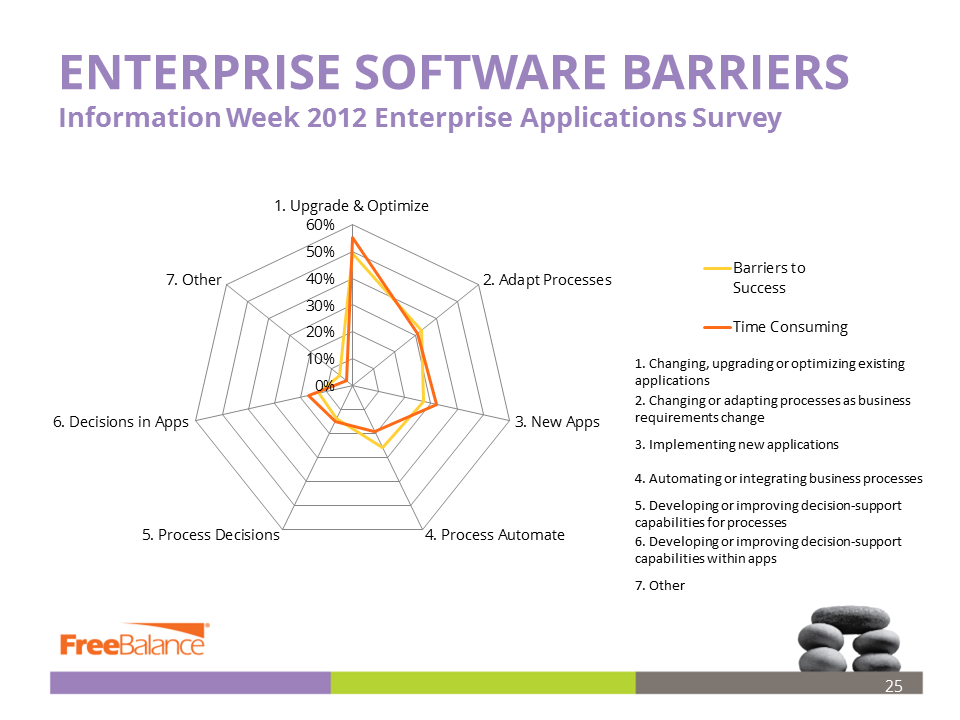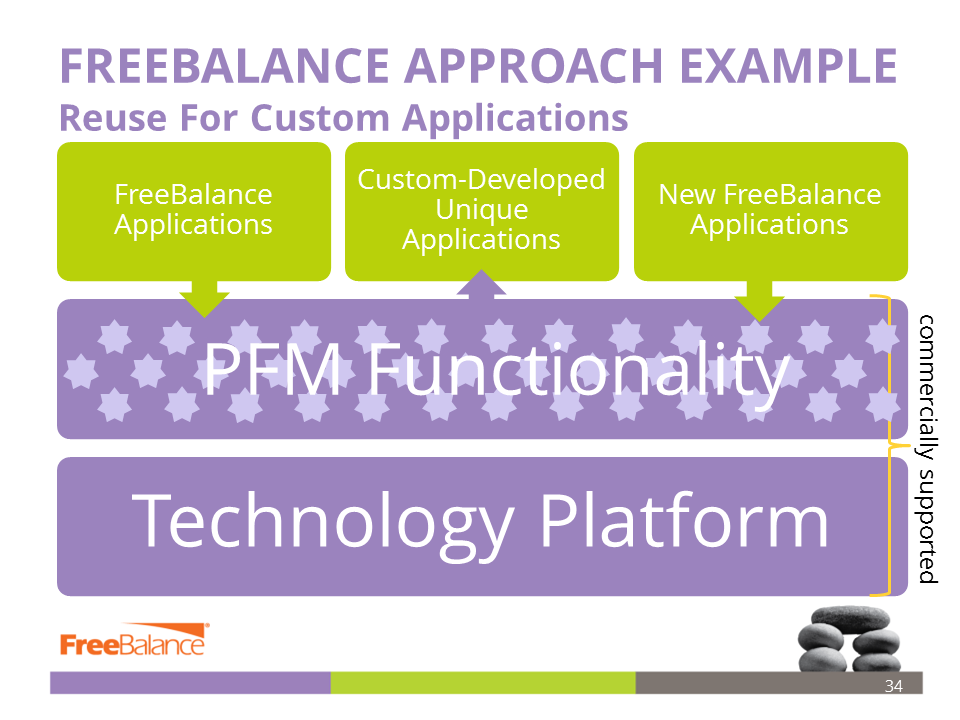The agenda for the Inter-American Development Bank workshop this coming Monday, The Cutting Edge on Information Technology on Public Financial Management, summarizes the perception of government software choices for Integrated Financial Management Information Systems (IFMIS) in the region:
“there are several alternatives to modernize an IFMIS, for example a tailor-made system (in-house development or using consulting firms to outsource some or the total of the system components) or the parameterization of a Commercial off-the-shelf system. Although the trend over the last 30 years in the region has been for the tailor-made option, there is growing interest in using commercial applications, including the options of combine modules of different origins that share, or a least could interchange information via Web Services, common financial information structure etc.”
This growing interest in the “parameterization” of “Commercial off-the-shelf” software is good news for FreeBalance. Our Government Resource Planning (GRP) software, the FreeBalance Accountability Suite, is a highly parameterized system designed exclusively for government IFMIS needs. One could be fooled into thinking that the customization of Enterprise Resource Planning (ERP) software, originally developed for private sector requirements, also meets this definition. However, these systems require code customization. Code customization, in the form of custom code, scripts, call-outs and macros, adds complexity and errors to implementation and complicate future reform efforts.
The Legacy ERP Problem
Technology analysts, the Gartner Group, has defined almost all leading ERP suites as “legacy” in the emerging “post-modern” enterprise software era: “many business executives have expressed real concern about the lack of flexibility in their business applications.” And, that’s the private sector. This customization approach has been found to be problematic, as described by Dener, Watkins, and Dorotinsky of the World Bank: “another failure factor is the high level of customizations which make the ERP software more unstable and harder to maintain when it is finally activated. Not surprisingly, these are similar to the patterns of failure visible in the public sector as well.”
Consider the flexibility challenges in software developed for business in the government context of changing government rules, modernization and Public Financial Management (PFM) reform.
There has been a low success rate in government IT projects globally, even in the most developed countries. Niam Yaraghi, of the Brookings Institution, has identified the unique problems constraining government IT project success.
Technical Debt and ERP
ERP projects that implement successfully often burden government with high technical debt. As identified by Deloitte, “technical debt concerns [translate] into measurable business risks.” For example, the United States Government Accountability Office indicates: “that federal IT projects too frequently incur cost overruns and schedule slippages while contributing little to mission-related outcomes.”
Technical debt has long-term cost implications. Debt is high in custom-developed software and customized ERP. Spending increases on maintaining and updating software at the expense of acquiring new technology. This increases the Total Cost of Ownership (TCO), making many government systems financially unsustainable. A survey by InformationWeek by Douglas Henschen, currently with the Constellation Research Group, for North American businesses “changing, upgrading and optimizing their existing enterprise apps is their biggest challenge.” According to Chris Karnaracus, also currently with the Constellation Research Group,“It’s easy to find businesses that have actually spent 10 times as much money on customizations as on the initial license fees, and still more money to support and carry these customizations forward during a software upgrade.”

The Innovation Impasse
Legacy systems have far-reaching negative consequences beyond cost. Technology analysts, IDC, describe the impasse caused when systems of record, like ERP, constrain evolution. This means that the ability to leverage new technology envisioned in the IDB workshop like blockchain, cloud computing and more usable front-offices is prevented.
ERP systems were conceived in the 1990s based on the constraints of the time: Y2K, mainframe computing and costs, limited cross-business functionality. The context has changed.
21st Century Government Systems
The technical debt from legacy ERP systems from major software vendors is too high to enable PFM reform in Latin America and the Caribbean. Some OECD countries can afford these systems, but it’s not an appropriate approach for any government.
Don’t get me wrong, tailor-built systems have significant technical debt. Many of these were developed piecemeal in technology silos.
We believe that “post-modern” systems with significant adaptability, and little code customization, is the best approach for government financial systems in Latin America and the Caribbean. The impact of the original software design cannot be overlooked. The FreeBalance design for PFM, the PFM Component Map, and the “built for life” approach has been shown to reduce TCO across 15 years, based on analysis by Ganly, Kyte, Rayner and Hardcastle of the Gartner Group.

Some enterprise software vendors claim to support configuration. But, this ‘configuration’ comes in the form of macros, scripts, stored procedures and call-outs. That’s misdirection. That’s coding.
What if You Need Custom?
It should also be noted that the FreeBalance Accountability Suite is a pure-web design to facilitate cloud computing. It should also be noted that the underlying “business components” of the Suite, what we call “government entities”, are available for more sustainable custom software development in government. That’s why our approach has been compelling to governments in Latin America and the Caribbean.

Personal Action Item
My FreeBalance Latin America and Caribbean colleagues will be paying close attention to lessons learned at the workshop. Follow my @dalytics Twitter feed on the 19th. and stay tuned to my observations later next week.
